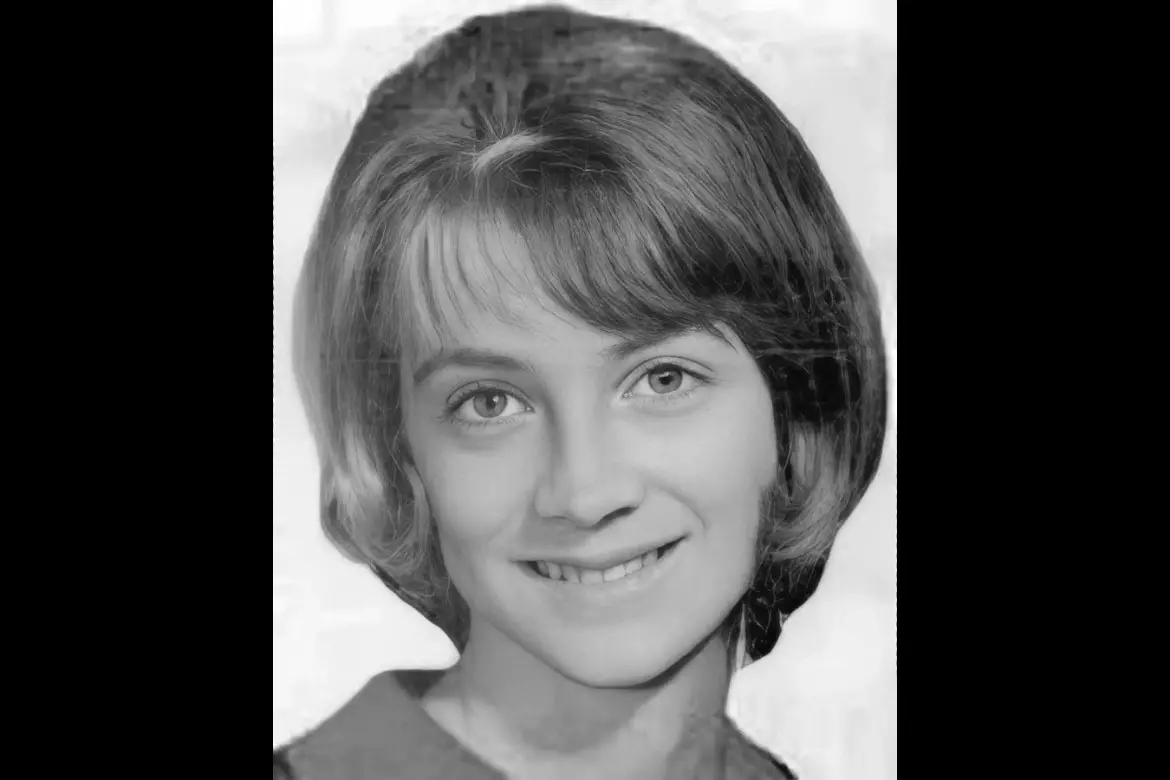Cindy Lee Mellins, 19, dreamed of being a teacher and worked hard to make it happen. But on January 20, 1970, someone abducted Cindy after she left her place of employment. Cindy’s father discovered her car in the parking lot at work the following day, on a jack with one tire slashed.
About Cindy Lee Mellin

Cindy was born in 1950 to Leonard and Adris Mellin, one of five daughters and the fourth child, born 14 years after her oldest sister, Judith. She and her 15-year-old sister, Paula, lived with their parents at 258 N. Linda Vista Road, Ventura, California, and attended Ventura College full-time, where she studied education.
People described Cindy as warm and shy.
Cindy’s older sister, Janice Lindskog, told the Ventura County Star in 1995 that her missing sister was “quiet, obedient, hardworking, spiritual — a downright goody-two-shoes.”
Cindy came from a close-knit family and always informed her parents of her activities. Even though she was an adult, Cindy did not like worrying her parents.
She was devoted to her studies and too busy with school to date anyone. Cindy also worked part-time at The Broadway department store (now Macy’s) in the Buenaventura Shopping Center (now Pacific View Mall).
The Broadway faced South Mills Drive, but her employer required employees to park in the back of the lot along Main Street, which meant she had to make a bit of a trek to her car at night following her shift. That always bothered her, and one of her sisters once asked why she did not park in a closer lot like some of the other employees. However, Cindy knew that she would be breaking the rules, and she never did that under any circumstance.
But one night, Cindy walked to her car after her shift ended and vanished without a trace.
Disappearance of Cindy Lee Mellin
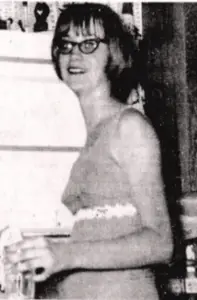
On Wednesday, January 21, 1970, Cindy’s father, Leonard Mellin, 57, awoke at 4:30 a.m. and noticed the front porch light still on and Cindy’s blue and white 1960 Rambler American car was not outside.
Cindy had worked the night before and usually returned home by 9:50 p.m. Her father was not initially worried when she had not returned home by 11 p.m. because he thought she went out for coffee with a friend or coworker. But by morning, Leonard realized something was wrong. Worried, he drove to where Cindy parked her car during work hours.
When Leonard arrived at the parking lot, he spotted Cindy’s car sitting on a jack with a slashed flat tire, the driver’s door ajar, and the trunk open. The spare tire and a lug wrench that did not fit the car’s tires were on the ground. But Cindy was nowhere in sight.
Cindy was scheduled to take her first-semester final exam at 8 a.m. but never showed up. Leonard attempted to report his daughter missing, but the police told him he had to wait 24 hours because Cindy was an adult and might have taken off for a few hours.
However, Cindy never returned, and her father officially reported her missing. Cindy’s mother, Ardis, was out of town visiting one of their daughters in San Diego.
Investigation
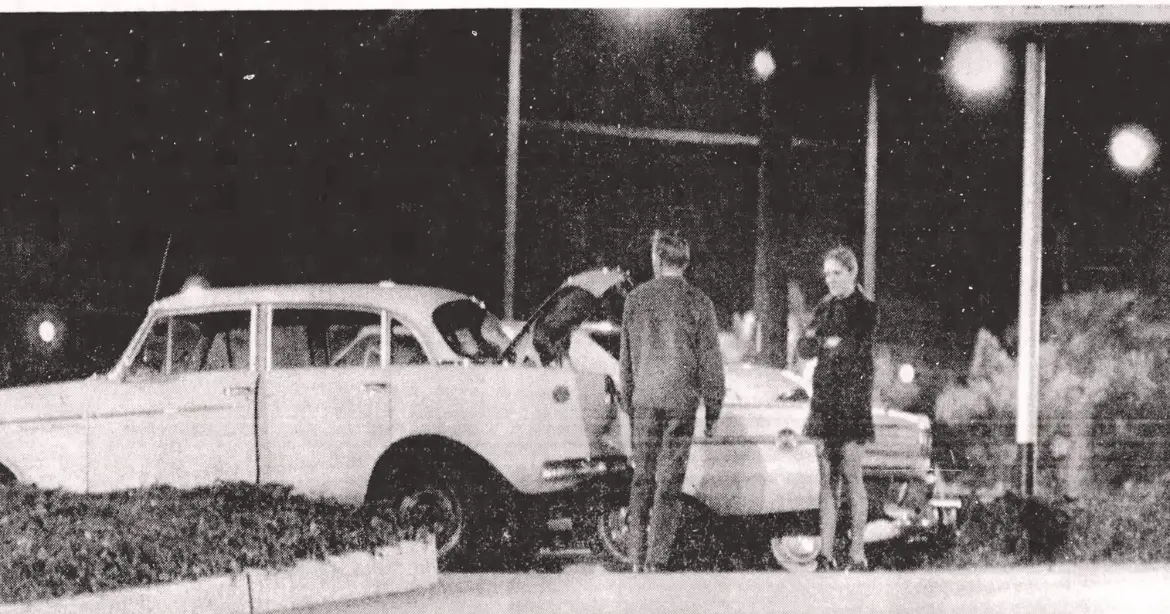
Police began their investigation by interviewing Cindy’s coworkers and employees in the nearby stores. They learned that Cindy was not scheduled to work the night she vanished. However, someone from work called her in for the 5:30 p.m. to 9:30 p.m. shift and left the store at 9:40 p.m.
Ten minutes later, two coworkers and their husbands saw Cindy standing beside her car on their way to get coffee. The vehicle was on the jack, a tall, slim man between 30 and 40 was with her, and a light-colored compact vehicle was nearby. Cindy waved at them, and they assumed the man was Cindy’s father. They returned from coffee at 10:10 p.m., and Cindy was gone. They were the last people to see Cindy before she vanished, which did not make sense to investigators. Main Street was always busy, even on a Tuesday night, so someone had to see something. However, no one else ever came forward, and investigators never found the mystery man.
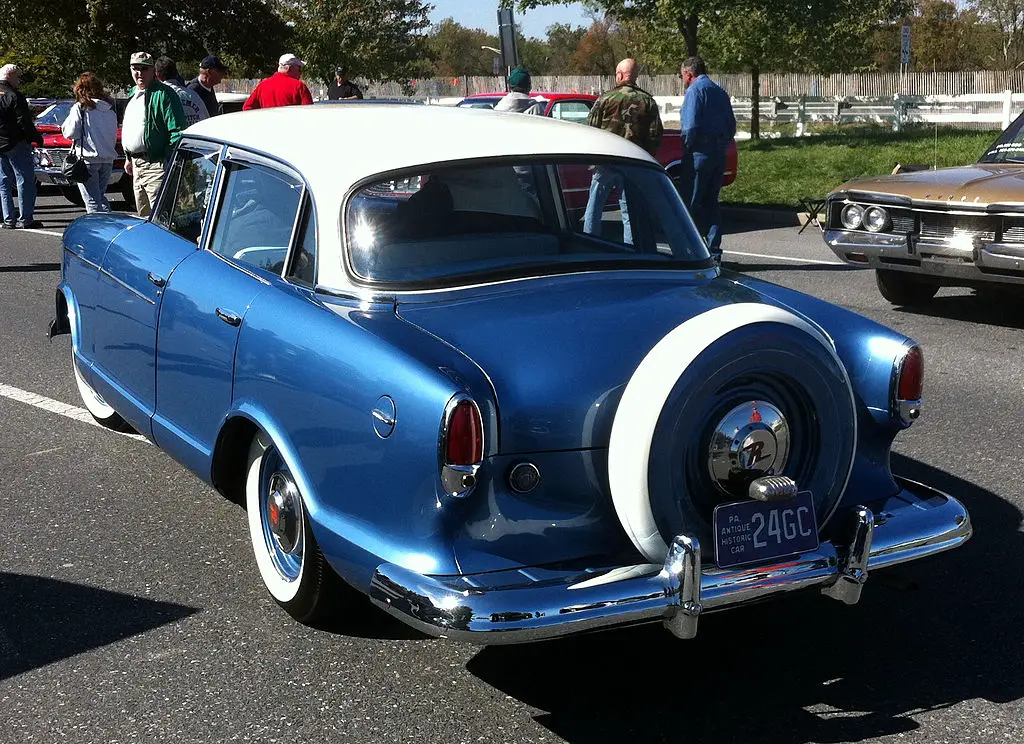
Police found no physical evidence around, in, or on Cindy’s car, nor any witnesses to the abduction. Crime lab tests on the tire revealed it had been punctured with a sharp instrument, but authorities were hesitant to say it was a knife because a shard of glass or a rock could also have speared it.
Investigators knew immediately Cindy had not left voluntarily because she was not supposed to work that night. She was also studying for her final exam during her work break and left some belongings and her car behind. Cindy had very little cash on her when she left home.
During the first week of the investigation, detectives pursued every lead they received, and a suspect briefly emerged. The man was a convicted rapist who acquaintances said preferred shy girls like Cindy. Furthermore, he lived near the shopping center and worked in some places Cindy frequented. Leonard later said he felt they should have looked further into the man. However, the police said they had spent 250-300 hours investigating the suspect and found no evidence linking him to the abduction. The man subsequently committed another crime, left town, and disappeared.
Sightings
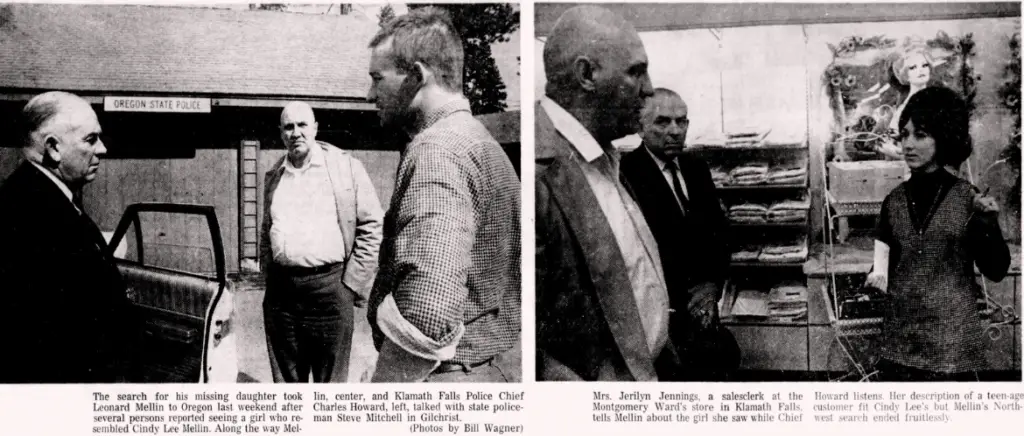
The investigation slowed until February 1970 when a janitor at Ventura College came forward. Garland Triplett said he spoke with Cindy on several occasions, and she once discussed an upcoming trip to Klamath Falls, Oregon, after Triplett mentioned having family in Medford, Oregon.
Ventura police sent a police bulletin with Cindy’s picture to television stations in Klamath Falls. Shortly after, police in Klamath Falls called and said several city residents reported seeing a girl resembling Cindy after viewing a police bulletin with Cindy’s photo on television.
Leonard and Ventura County Star’s journalist, Bill Wagner, who locally covered Cindy’s disappearance, flew to Klamath Falls.
A general store clerk, a sales girl at a department store in Klamath Falls, and the owner of a small grocery shop about 60 miles away all said a girl resembling Cindy had been in their store. The girl was apparently not in the area. She was never found. (Wagner, 1971) Some witnesses told the police that the girl’s hair was longer than in the picture of Cindy. Cindy had shoulder-length hair when she disappeared.
The Mellin family and investigators never believed Cindy ran away and maintained that someone had murdered her.
Few Leads Surface
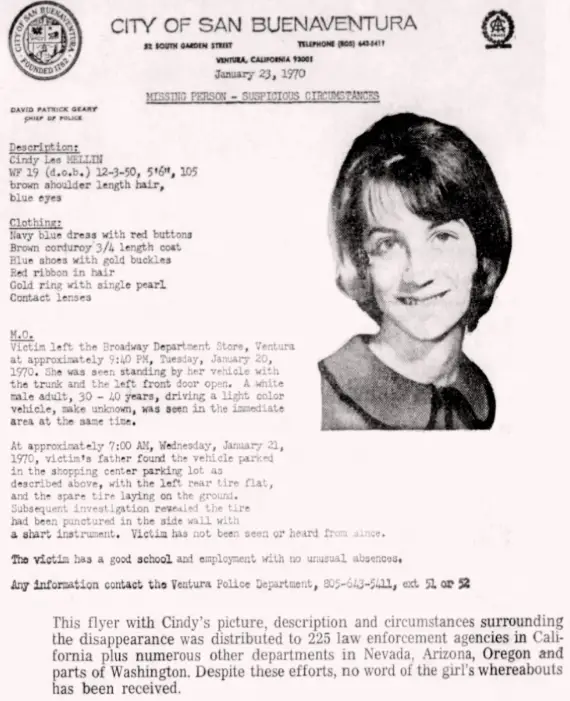
After the Oregon leads, few additional tips surfaced in Cindy’s disappearance. There was an attempted kidnapping of another young woman in an Oxnard parking lot that was eerily similar to Cindy’s case and reported by an Ojai priest. The woman was attacked on a Tuesday night around 9:30 p.m. — the same weekday and time of night Cindy disappeared. The suspect had grabbed her from behind and attempted to drag her away (Wagner)
Several months later, in late September, a young woman was attacked while walking her dog in a vacant lot in the 3300 block of Peninsula Way in Oxnard. The suspect stopped his car and started walking toward her, but the woman kept walking. He then grabbed her from behind, and threw her to the ground. However, her screams scared him away.
Three Fillmore youths reportedly spotted Cindy driving a purple sports car in the area, wrote down the license plate number, and called the police. However, the man who owned the vehicle had a daughter who resembled Cindy, who could have been in the area.
A psychic claimed she had visions of Cindy held against her will at a house in the desert and said the area was in San Bernardino County. The police checked the area but found nothing.
An unidentified body landed in the Los Angeles County morgue. Police checked to see if it was Cindy, but the body could not be identified. (Wagner)
In early 1971, detectives sent Cindy’s dental records to the Contra Costa Sheriff’s Department after that agency had found the body of an unidentified girl. However, the dental records did not match.
Bogus Lead
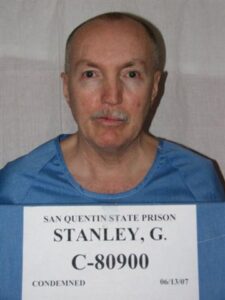
Nineteen years after Cindy vanished, Ventura investigators visited San Quentin’s Death Row north of San Francisco in early 1989 to check out a lead in Cindy’s disappearance.
Gerald Stanley was serving a life sentence on death row for killing his second and fourth wives. He claimed he knew where Cindy’s remains were buried.
But the detectives quickly learned that Stanley liked to claim knowledge of homicides throughout California falsely.
When Sgt. Roger Nustad and Cpl. Russ Hayes arrived at San Quentin, but Stanley refused to go to an interview room. Instead, he wanted the detectives to come to his prison cell, which they declined.
“If he had information that he wanted to talk to us about honestly, he would have come over and seen us. He showed us his colors right away,” said Nustad.
Nustad and Hayes never spoke with Stanley and believe he lied about knowing the location of Cindy’s body.
Aftermath
Cindy’s parents always believed the man seen with Cindy by her car kidnapped and killed her. During the police search for Cindy, Leonard contacted Dutch psychic Peter Hurkos, who was in Los Angeles then. But Hurkos was not cheap and demanded $5,000 to lend his assistance, which Leonard did not want to pay, understandably.
Leonard then offered rewards totaling almost $16K for information leading to the arrest and conviction of Cindy’s kidnapper and killer. He did so because he believed some people had information about Cindy but refused to come forward. Months later, he withdrew the reward money when nobody came forward.
Cindy’s parents died without ever knowing what happened to her. Cindy’s mother, Ardis Mellin, died following a stroke in 1975, and Leonard died in 1981. Three of Cindy’s sisters are now deceased. Her surviving sister, Mary Ann Wesson, is now 80 and resides in California.
Interesting tidbit!
In 2022, Richard Senate wrote on his website, Ventura Breeze, that he spoke with a sales clerk at Macy’s (The Broadway in 1970) who claimed the store was haunted and the clerk named the ghost — Cindy Lee Mellin!
Richard wrote, “Footsteps were heard when there was no one there, someone humming, and clothes moved on the rack.”
TCD’s Thoughts
Everything below is strictly the opinion of this author.
I definitely believe the mystery man seen with Cindy by her coworkers abducted and killed her. I also think he had slashed her car tire before she left work. That means he knew she worked, that she worked that particular night, what time her shift ended, and where she parked her vehicle. Another possibility is the abductor saw her parking her car as she headed to work and returned before the store closed.
Maybe he worked at Ventura College, like the janitor Garland Triplett, who was 46 when Cindy vanished. One of Cindy’s sisters said in 1970 that she doubted Triplett’s story about Oregon because Cindy was painfully shy and had difficulty talking to anyone other than her family.
He was from Oklahoma. His wife, Cora, died in Oklahoma on December 5, 1949, at age 25.
At one time, Triplett lived at 1551 E. Thompson Blvd in Ventura, a five-minute drive to The Broadway store. I cannot say for sure he lived here in 1970, however. Triplett died in 1994 at age 71. While Triplett was slightly older than Cindy’s coworkers described, he might have looked a bit younger.
We know that a killer will sometimes involve himself in the case to see what the police know. While Ventura police should have investigated him because his story seemed far-fetched, there is no mention of them questioning him as a possible suspect. I do not believe Cindy was the person in the Oregon sightings.
Nobody reported hearing screams in the area or witnessing an abduction. So, did Cindy willingly get into her abductor’s car? Did she know him? Maybe he said he would take her home. Cindy might have felt comfortable with a man old enough to be her father.
Sources
Good, Meaghan. “Cindy Lee Mellin.” Image. The Charley Project. https://charleyproject.org/case/cindy-lee-mellin
McLain, Jim. “On Death Row, a Dead End.” Ventura County Star, March 9, 1989.
Pyle, Encarnacion. “25-Year Mystery Lingers.” Ventura County Star, January 20, 1995.
“Ventura Coed Vanishes From Parking Lot.” Ventura County Star, January 22, 1970.
Wagner, Bill. “Missing Cindy: Friends, Parents Keep Fearful Vigil.” Ventura County Star, January 23, 1970.
Wagner, Bill. “Father Told Cindy Alive in Oregon.” Ventura County Star, March 14, 1970.
Wagner, Bill. “Cindy Mellin: Still Missing One Year Later.” Ventura County Star, January 21, 1971.
Wilson, John. “Girl’s Disappearance Still a Mystery 16 Years Later.” Ventura County Star, February 21, 1986.



